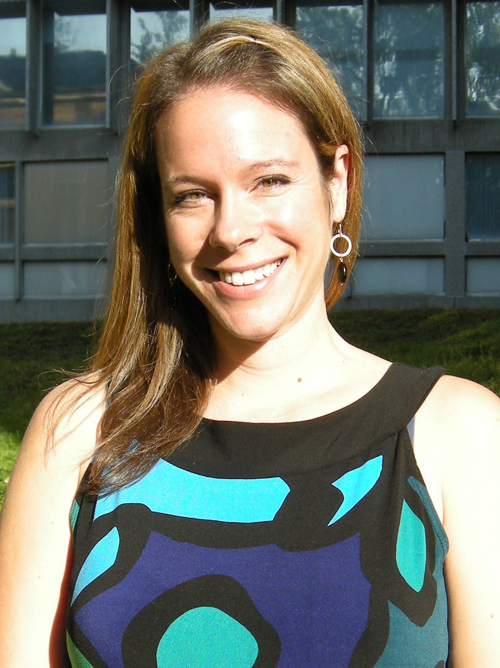
If children are given all recommended vaccinations, they’ll have more than 20 injections before age 18. That’s a lot of needles, and this number doesn’t include any times they have blood taken for testing or are given medications intravenously. Researchers have found that many children are afraid of needles and concerned about the pain, yet parents don’t always know how best to help their children through these uncomfortable experiences.
Prof. Meghan McMurtry, recently appointed to the U of G psychology department, has been studying how parents respond when their children are undergoing painful procedures such as immunizations and what behaviours seem to be most effective in helping the child deal with the pain.
“In our studies, we find that parents tend to reassure their children,” McMurtry says. “They say things like ‘don’t worry, you’ll be fine, it’s okay.’ However, when we look at the behaviour of the child and the child’s rating of the pain, this generally isn’t helpful. When parents reassure, the children show more distress and say they experienced higher levels of pain.”
Instead, three other responses are more effective in reducing a child’s pain and distress. Distracting the child by talking about something other than the procedure or getting the child interested in something can be helpful. Using humour and teaching the child to use a coping technique, such as taking deep breaths, also work well. It is important to remind the child to use the technique at the time of the procedure.
Research has shown that reassurance is one of the most common things parents and medical staff do during needles. “In our study, we asked parents how frequently they used reassurance and distraction. More than 80 per cent of parents reported using reassurance frequently, whereas only 40 per cent reported using distraction that often. Parents were also more likely to think that their behaviours had been helpful to their children if they used reassurance, even though this is not what the research says,” McMurtry adds.
Given that reassurance is so commonly used by parents, McMurtry has sought to solve the puzzle of why reassurance is not helpful to children in pain. One possibility, she suggests, is that children interpret this reassurance from their parents as an indication that the parents are worried. To explore this aspect further, she developed a new study that researched the impact of facial expressions and rising and falling vocal tones of adults as they sought to reassure their children.
“I found that facial expression is a very important cue for children,” she says, “but facial expression interacts with vocal tone. A rising vocal tone indicates uncertainty or questioning, so if a parent says ‘it will be okay’ but the vocal tone indicates uncertainty, this might make a child feel that the parent is actually worried about the procedure.”
McMurtry admits that investigating this parent-child interaction is complicated. “It’s the words, facial expression and tone of voice all interacting that determine how the child interprets things. And there may be forms of reassurance that are more helpful than others.”
The parent-child relationship might also be a factor. McMurtry hopes to collaborate with U of G colleagues to conduct future research that will examine reassurance and support during painful procedures from an attachment perspective. Is it possible that the reassurance doesn’t help the pain much at the time, but does strengthen the parent-child relationship in the long run by letting the child feel that “dad was there for me?” And do children with different types of attachment relationships show different responses to reassurances?
She would like to look more closely at how reassuring and soothing behaviours, including nonverbal cues of vocal tone and facial expression, work in other situations, such as with pets. “What do pet owners do when they take a dog or cat to the vet? Do they reassure or try to comfort the pet, and is this effective in reducing the pain? If not, what would work better?” she wonders.
McMurtry did her undergrad studies at Wilfrid Laurier University and her PhD at Dalhousie University, which included a clinical psychology residence year at Brown University in Providence, R.I. “I’m excited to be at U of G because it has a big psychology department with expertise across many areas of psychology. I’m looking forward to being able to collaborate with and learn from my colleagues.” She’d also like to collaborate with the public health nurses in the community who often do immunizations.
When she’s not trying to learn how to help kids deal with all those needles, McMurtry says she likes to play soccer and run. “I ran two marathons in support of the Arthritis Society and raised more than $11,000,” she says. She and her husband also love cooking and trying different recipes from places around the world.
But McMurtry’s true passion ─ other than her research ─ is travel. “I went to Japan at 13, and I say that I didn’t get bitten by the travel bug; I ate it. I turned 18 while backpacking in Europe, and I’ve been lucky enough to travel to Russia, Mexico, France, Italy, Spain, Portugal, Scotland, the Dominican Republic, Switzerland and Austria. I’ll go anywhere at least once!”